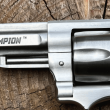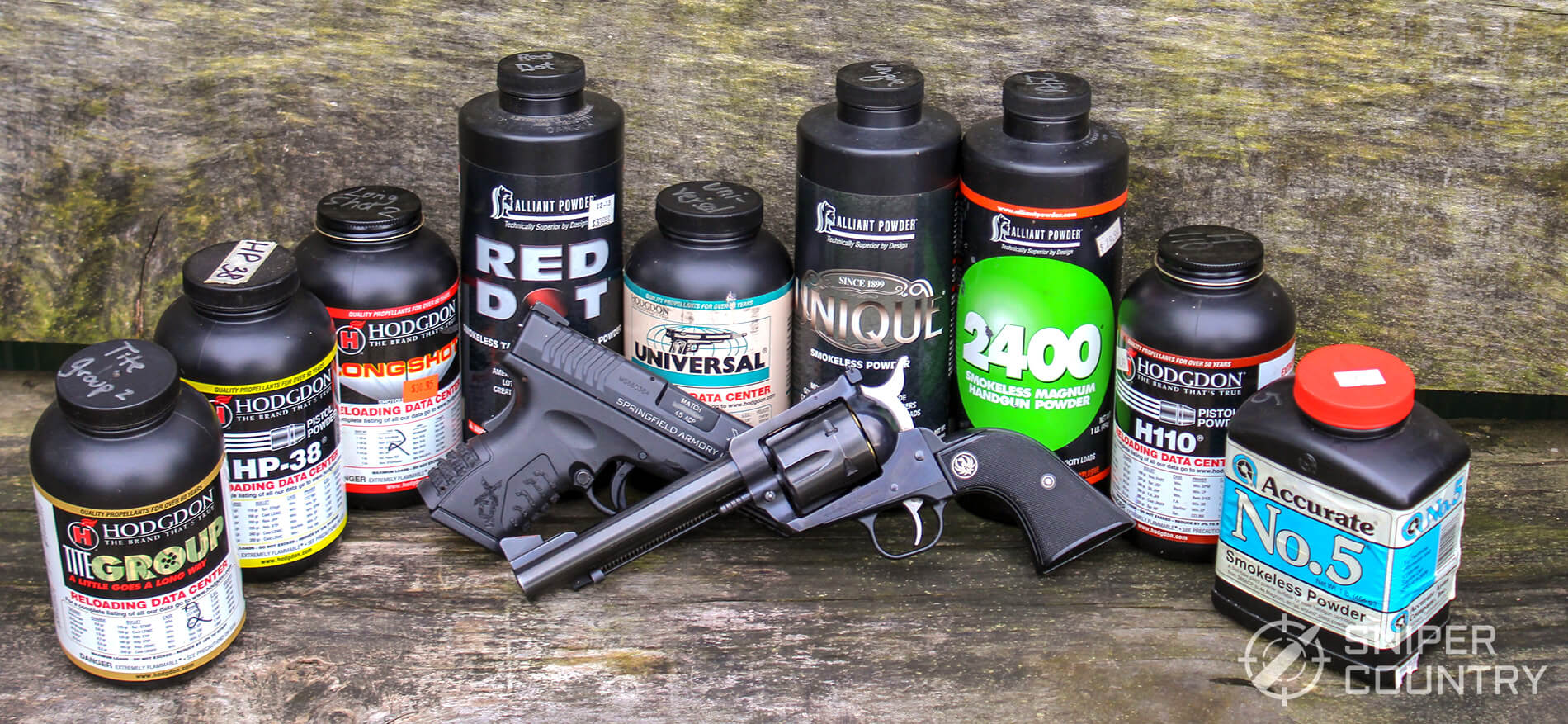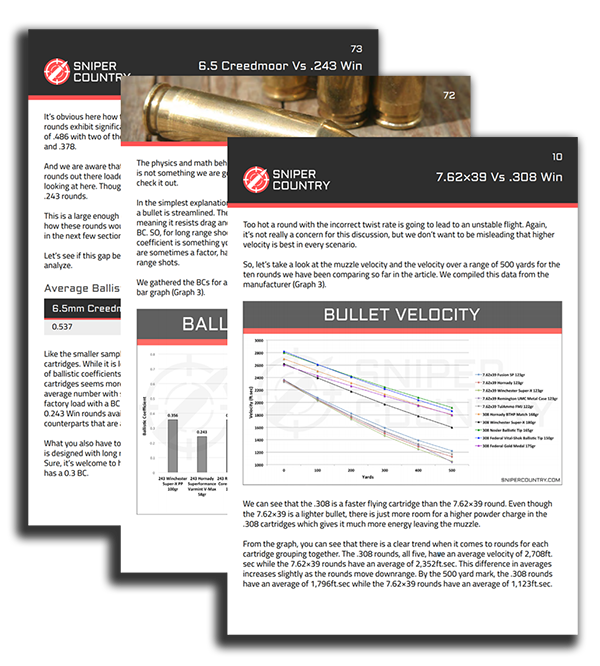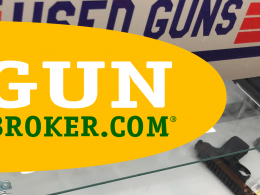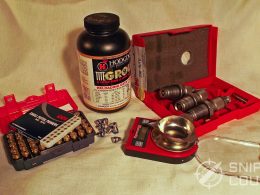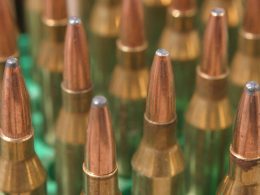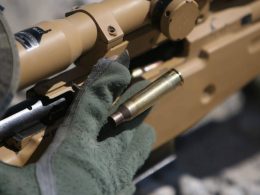In this Article:
I am a reloader. I take the brass cases that others often toss in the trash can (or just leave on the ground), clean them, and re-use them. I admit it. I’m a pack rat of the highest water when it comes to brass. (Don’t even ask about the lead-colored items I hoard from my local tire shop…that’s bullet casting and that’s another story).
I’ve been reloading since about 1977, so some folks look to me for information about the topic. A question that I am asked from time to time by folks new to handgun reloading is “what powder should I buy?†That is the question I will attempt to answer in this little guide.
Goldilocks Had It Right
Think back to when you were a kid (for some of us easier than others because we never stopped being a kid!). Remember the story “Goldilocks and the Three Bearsâ€? What was the purpose of that well-known folk tale? Now, let’s not see the same hands all the time… OK – you in the back – you say it was to advance the theory that the middle-bowl-of-porridge/chair/bed is the best? One was too hot/big/small while the one on the other end was too cool/small/not-her-size? The middle choice was right most of the time, right? Good, class… you get it. Whether you agree with that theory or not, we will touch on it in the following discussion. Sometimes the middle road is best, and with handgun powders, we’ll explore that notion.
It’s Gunpowder, Not A Folktale!
OK, I get it. I simply wanted to use something that would get your attention and then help serve as an introduction to our subject at hand – a quick guide to pistol powders. Our friend Goldilocks will come back in a little while. For now, let’s look at four basic tasks that we accomplish by using handguns.
#1 Target Shooting
Either informal or competitive, target shooting is probably the second-most common reason folks pick up a revolver or a pistol today. From paper targets in the backyard to a formal range session, target shooting builds our skills. Trigger control, sight acquisition, grip…there are many ways that simple target shooting hones our skills. Whenever I think of competitive target shooting, the image of a person standing 90 degrees to the target, with a customized 1911 in one hand aimed at a bullseye target 50 yards downrange comes to mind. The off hand will be tucked into the waistband or a pocket. Thus was NRA-sanctioned Bullseye competition from yesteryear. This is the mental image that pops into my mind when I think about competitive target shooting. Of course, there are many other types of targets – especially nowadays with tactical/combat/self-defense and other types of competitions. Somehow that older image from a bygone time sticks with me, even though I shoot the more contemporary target courses at my home range and others. Some visions die hard. Even so, target shooting is very popular.
#2 Plinking
Closely related to target shooting, plinking is defined (by me) as shooting at informal or improvised targets in a relaxed setting. Here, we see similar paper targets as mentioned above, along with whatever else you can find to put holes in. (Over-ripe zucchini are great!) This would have to be done on a home or otherwise-unofficial range, as most commercial ranges have pretty strict rules as to what type of target you can ventilate on the premises. And, you should not shoot at glass or any hard surface that could cause the bullet to ricochet… reference, Ralphie in “A Christmas Storyâ€.
#3 Hunting
I am in the 1% of deer hunters in my state that hunt with a handgun. There are darn few of us, to be sure, and I don’t know why. If the year was, say, 1960 or so, your choices would be limited as to which handgun and cartridge you could ethically use so I could see the small percentage. The .44 Magnum was introduced to hunters in 1956, and you had the .357 Magnum from 1935 to name a couple of rounds that take deer (Read also: .357 Magnum vs .44 Magnum Comparison). The venerable .45 Colt has always had its proponents. Most laws did not allow handgun hunting until fairly recently, and then only with certain cartridges. But, the cartridge list has expanded from what it was in 1960. If you factor in small-game hunting, then your choices open up. Even so, handgun hunting is still pretty much in the hands of the specialist, someone who practices regularly and is good at getting fairly close to the target critter. With my .243 in hand and a good rest, I’m good to almost 300 yards on deer-sized game, but with my .44 revolver, I’ve limited myself to 100 yards, max. Even with limitations, handgun hunting is still popular among the 1 percent (at least around here).
#4 Self-Defense
I mentioned above how that many guns sold are for target shooting…the self-defense role would eclipse the target role in terms of handgun sales, especially in today’s climate. With the current pandemic spreading across the fruited plain, many gun stores have bare shelves due to folks buying guns for personal protection. Without going too far overboard in the self-defense category, we see many, many people buying guns. The problem is getting ammo for the new guns…my nephew and his father-in-law each just two days ago bought new Gen 5 Glock 17s but had to order ammo online – the store was out of 9mm rounds. I would venture a guess that more handguns are sold for personal or family protection today than in any other time period I could think of. The F.B.I.’s record-setting background check numbers are truly eye-opening and proof of record sales.
So, we have four basic reasons why people buy handguns.
A certain percentage of them will turn to reloading in order to add to their shooting experience. If you learn to “roll your ownâ€, you can get more shots per dollar, especially if you shoot home-cast bullets. For the cost of a pound of powder, primers, bullets and those free brass cases you picked up or otherwise saved, you can make two or three times over the number of cartridges that you could buy from the factory for the same money…in some cases, even more. Let’s look at some possible reloading scenarios and what powder type goes best with each…
- Practice loads. If all you want to do is punch holes in targets (either paper or other), you can make very shootable, accurate rounds for as little as 3-4 cents each. (This is if you are using home-cast bullets. If you have to buy cast bullets, it can add a few cents to the cost). A fast-burning powder is called for here.
- Hunting loads. Every deer except for one that I have killed with my long-barreled S&W 629 .44 Magnum has fallen to a bullet that I cast, sized, lubed and loaded. The one exception was a deer I took with a 240-grain JHP .44 Special round from Georgia Arms. My cost-per-round was too low for my non-mathematically-inclined brain to figure. The bullets were accurate, and put the deer down with authority. The bullet in question was a Lee 260-grain semi-wadcutter. Here, a medium-to-slow burning powder works best.
- Self-Defense…uh…I don’t carry reloads for self-defense. Here is where I don’t skimp – I buy the best SD loads I can find. I advise against carrying handloads in your carry gun. Even if you could guarantee 100% reliability, there’s still the liability aspect. Don’t go there.
So, we see that target or practice loads can make use of a faster, quicker powder while hunting loads normally use a medium-to-slow powder. What do I mean, fast – medium – slow? Let’s look at a burn rate chart.
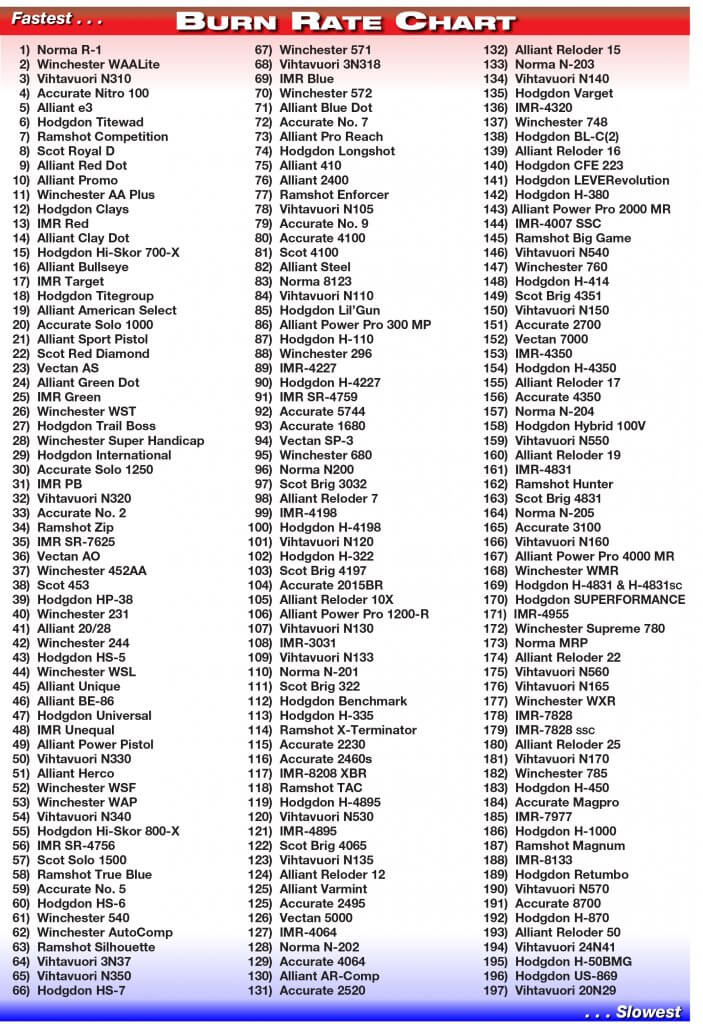
The powders are listed from the fastest-burning to the slowest. Most pistol powders are actually made for shotshells, in case you recognize some of their names. All things equal, a faster-burning powder requires a lesser amount of powder to be loaded than a slow-burner. (Let’s just call powders fast or slow and leave out the “-burningâ€). It all has to do with pressure.
Pressure Points
What I was trying to explain above was that, in order to keep pressures on the civil side (I’ve blown up guns before from overpressure loads), a fast powder builds to its pressure peak very quickly, while a slow powder tends to spread the pressure arc out over a little bit of time. Here’s a basic diagram…
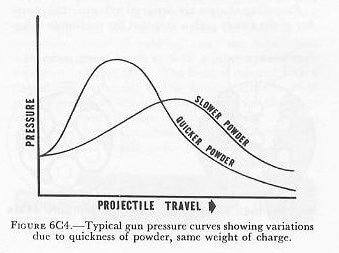
You see how the faster powder peaks quicker than the slow powder. This is a very simple diagram, actually from the U.S. Navy, but the principle is the same. If you want to increase velocity, be careful – you should use somewhat less fast powder because its pressure peak occurs quickly – or you could use a little more slow powder because its pressures build more slowly, both given the same weight of bullet.
Speaking of bullets, this is tied to bullet weight as well. All factors that produce pressure in a gun must be balanced. A heavier bullet must have its corresponding powder weight adjusted downward in order to keep pressures equal…conversely, as bullet weight decreases, the powder charge or type can increase. It’s all about pressure. Too much overpressure and you will be picking up pieces of the gun off the ground, or worse. Trust me on this.
Let’s look at burn rates for some specific powders. Here’s the photo again that I placed at the top of this guide:
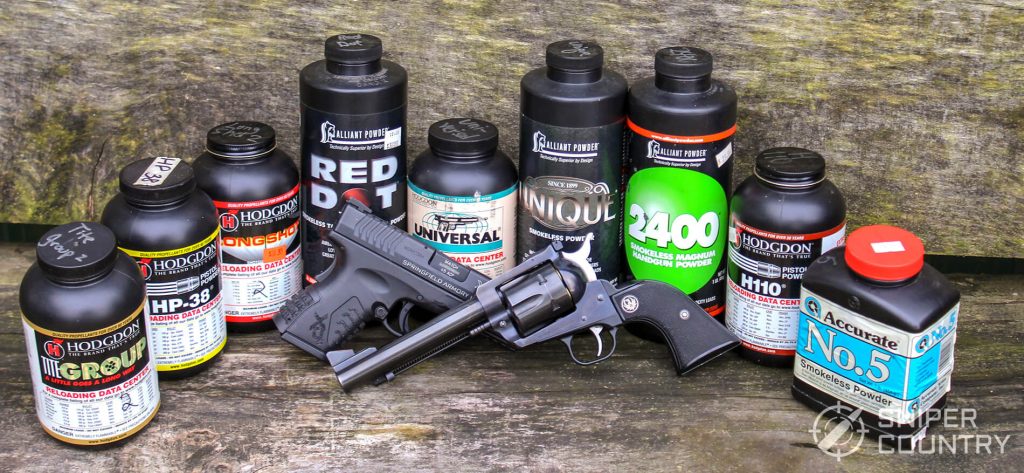
Look at the powders. Let’s find their positions on the burn rate chart… if we arrange them in burn rate from fast to slow, we end up with this:
- Alliant Red Dot: 9
- Hodgdon Titegroup: 18
- Hodgdon HP-38: 39
- Alliant Unique: 45
- Hodgdon Universal: 47
- Accurate Accurate #5: 59
- Hodgdon Long Shot: 74
- Alliant 2400: 76
- Hodgdon H110: 87
What does this tell us? Looking at burn rates alone doesn’t do much for us, but when we add in the cartridge, caliber, specific gun and other factors they can be useful. But… you should not substitute one powder for another just because they sit by each other on the rate chart. Other factors intervene.
What they do tell us is that Titegroup, for example, is a lot faster than Accurate #5. If you are putting together some .38 Special loads, you’ll need to pay attention to the fact that a small dose of Titegroup will do. Do not use load data for Accurate #5 powder and then grab your can of Titegroup by mistake– a blown-up gun would most likely result. Here are a couple of sample loads from my references to illustrate my point:
Accurate Arms #5 with a 158 grain JHP shows a max of 5.6 grains; Titegroup with the same bullet shows a max of 3.9 grains. I would not put 5.6 grains of Titegroup into a .38 Special case with a 158-grain JHP bullet-that’s a 30% overcharge. Period. You must be careful…do NOT mix up your powders. Keep only one container at a time on your bench. Pressures are not to be trifled with.
OK…so let’s look at some specific powders in each burn rate – fast, medium and slow. These are powders that I have on hand and by no means constitute all the suitable powders in each category. These are my favorites, for whatever that’s worth.
FAST POWDERS
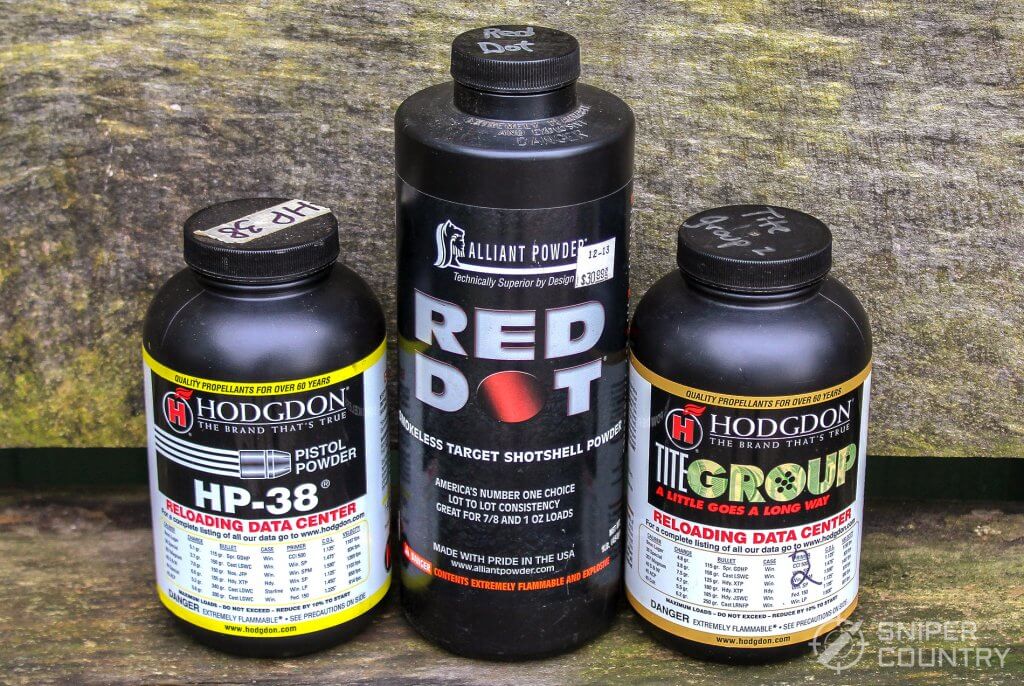
Here we have HP-38, Red Dot and Titegroup. I use these powders for target or practice loads in 9mm, .38 Special, .357 Magnum, .45 ACP, .45 Colt and .44 Special (with light bullets only for the last two). The burn rates are fast, but taking that into account, these powders make for a very economic load. You don’t need much powder to generate enough power to operate a semi-auto’s slide, so a light charge of a fast-burning powder is just what the doctor ordered. As was sung in a TV ad from my long-past youth, a little dab’ll do ya. An example: there are 7,000 grains of powder in one pound. If you find a load in a reputable source book that lists 4 grains of powder, you will be able to (theoretically – I always spill some) make 1,750 loads from that one pound. But, if you are loading a slower powder that requires more (I’m thinking of one of Elmer Keith’s favorite loads that required 22 grains of an unnamed powder – don’t want you to get into trouble), then you will only get about 319 loads. So, if you are on a budget, stick to faster powders. With powder costing, in some places, $30 per pound, economies enter into it. One powder not shown is Alliant Bullseye, the grand-daddy of light target load powders. I was out of that.
MEDIUM POWDERS
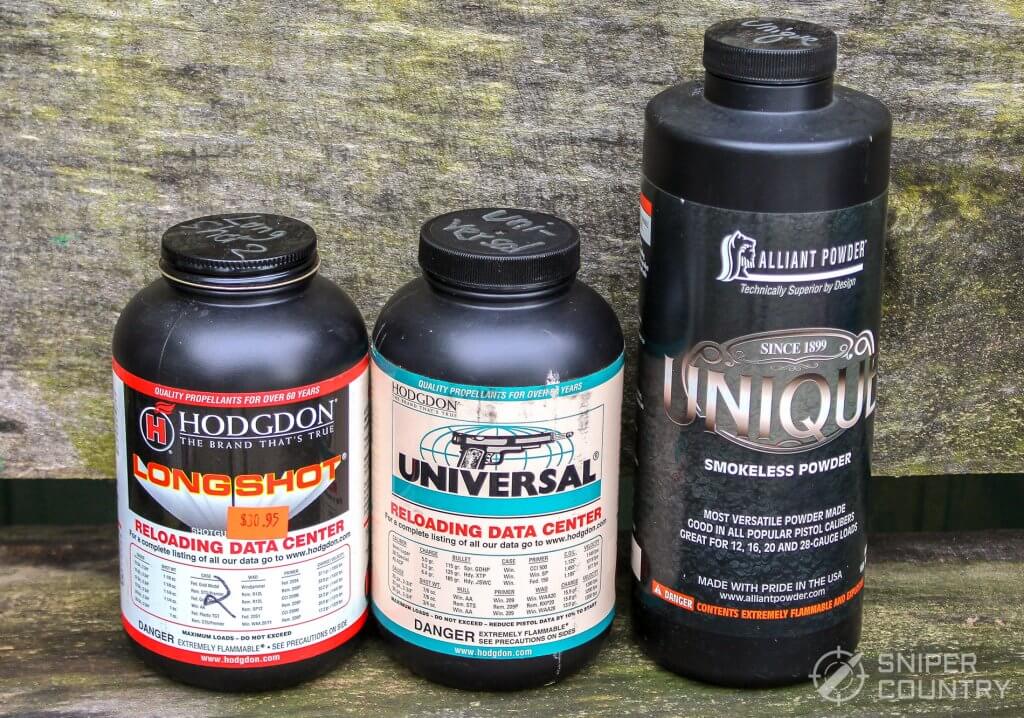
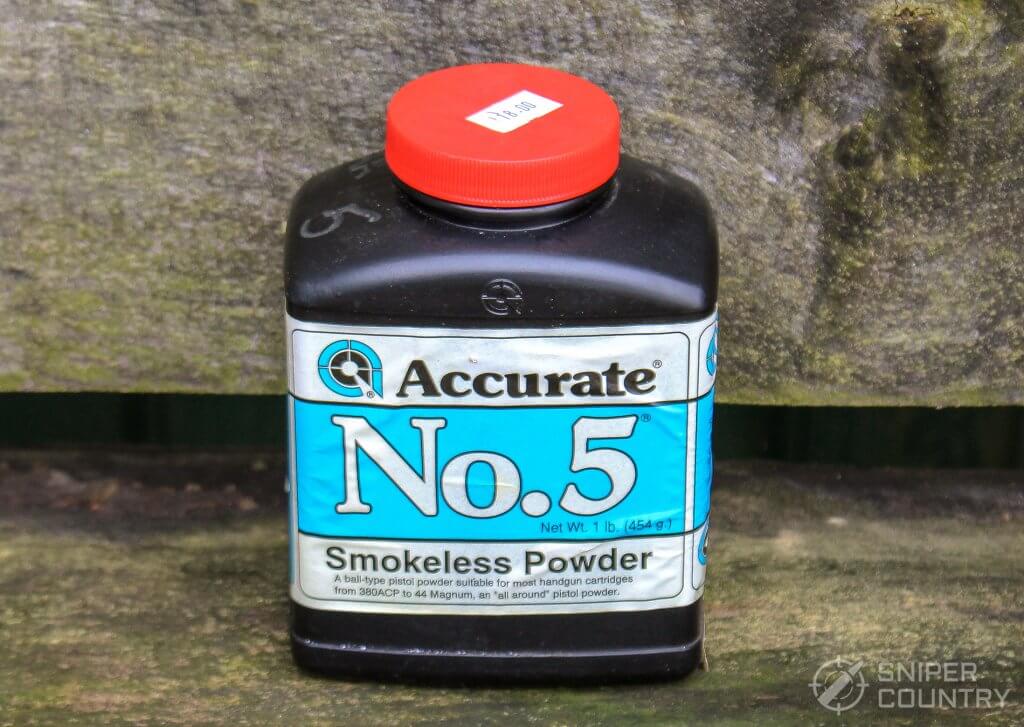
Here are four of my favorite medium-burning powders. Technically, Long Shot and Accurate #5 have a burn rate a bit slower than the others but I use it in medium-range loads. I load 9mm, .38 Special, .45 ACP, .45 Colt and others with these powders. Typically, a charge weight for, say, a mid-range .357 magnum load may be around 7 grains with Universal, so that should give you an idea of how many loads you’ll get per pound. One of the all-time favorites is Unique – I don’t know how many pounds of that I’ve gone through – but in my locale Alliant powders are non-existent. I’ve learned to substitute their readily-available Hodgdon counterparts, with overall very good results. Univeral is very similar in burn rate to Unique, so I can adapt my older Unique “recipes†for use with Universal. Be careful doing that – you cannot just swap powders that are next to each other on the burn rate charts. You need to work up a load, slowly. I have experimented enough to know what works. I have loaded these powders into mid-level .44 Magnum loads with my cast bullets and have achieved great results. I tend to favor mid-range loads for hunting, as my cast semi-wadcutter bullet will do the job anywhere around 900-1100 f.p.s. In my experience, that same cast bullet moving at 1300 f.p.s. just makes the same hole in the deer a little faster but other than that has no other real advantage for me. Plus, the slower load is easier on me and the gun.
SLOW POWDERS
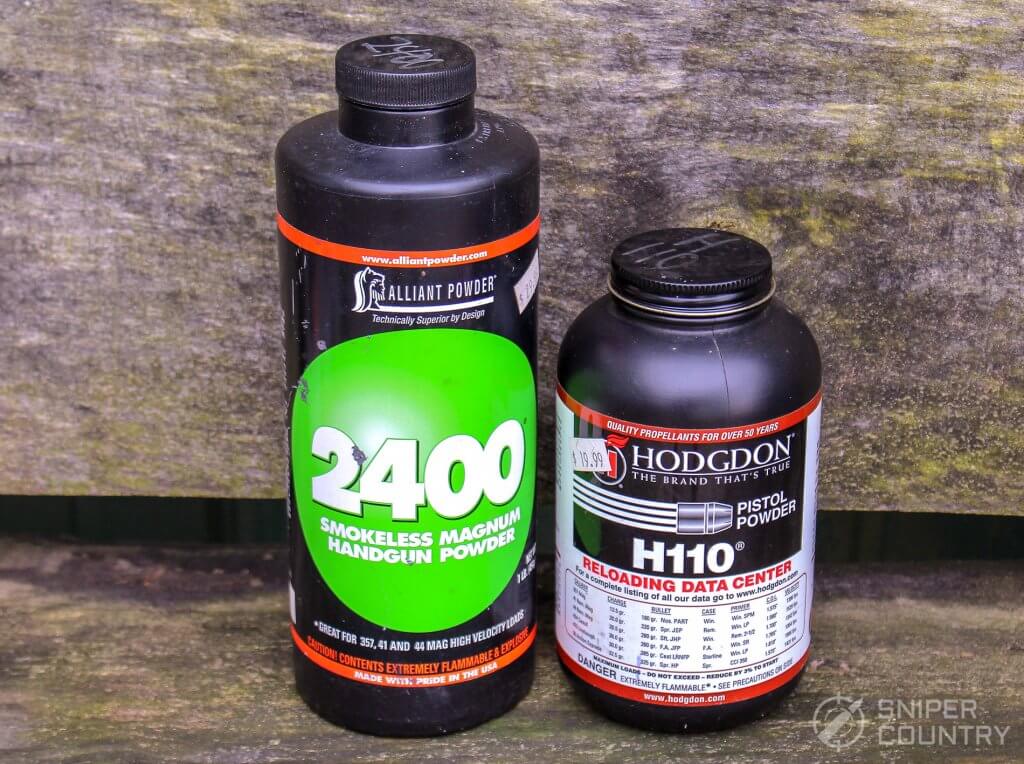
Here we have two of the kings of the slow-burning pistol powders – Alliant 2400 and Hodgdon H110. These powders, in the right charge weight, can push a bullet out of a long-barreled magnum at astounding velocities. The downside comes in the form of vicious recoil and a battered gun, over time. I remember getting ready for a silhouette shoot (remember those?) back in the ‘80s. I was shooting massive amounts of 2400 powder in my Ruger Super Blackhawk in practice. It was right after the match I attended was over that I noticed a bone protruding from my shooting-hand wrist – it was sticking up. The gun was promptly down-loaded to a more sane level, and the bone went back to where it came from. Now…I know some of you out there like the wrist-thumpers, as I used to. I say more power to you, but as for me, I’m sticking with my mid-range loads. As I said above, I’ve killed many deer with a 1050 f.p.s. heavy cast bullet – they don’t seem to notice the difference. One powder not shown is IMR 4227 – that’s good, slow powder for .44 Magnum loads.
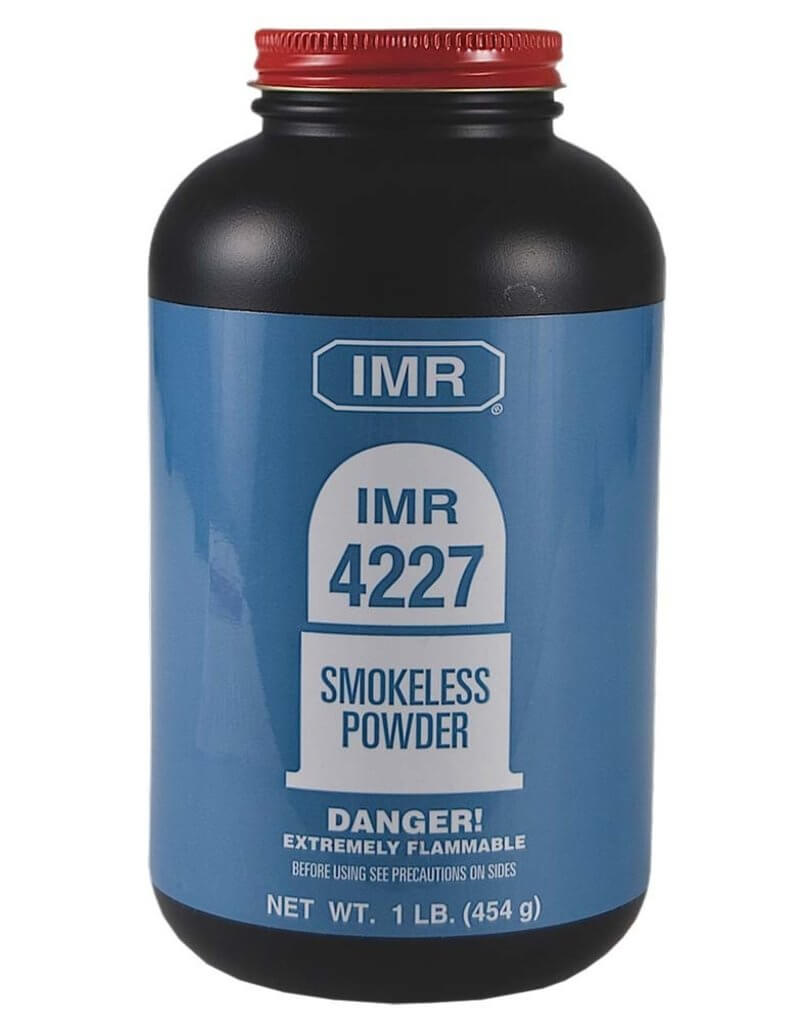
I will add one more thing to this conversation, though…if you are going to push a bullet to 1300 or so f.p.s., use either a very hard-cast or a jacketed bullet. Leading can become a royal pain with a softer-alloy bullet at those velocities. And, speaking of that, pay attention to your revolver’s cylinder chamber mouths. A bullet making the jump from the cylinder to the barrel may be squeezed down as it enters the forcing cone – just keep them clean. That’s a topic for a different day.
Special Offer: Join our private community and get exclusive gun deals, handpicked gear recommendations and updates on law changes, every day!
Join our private community
Load Data
Before we end this little stroll down Reloading Lane, I need to make sure you understand about load data and the internet. Back when I started, we had reloading manuals from the major bullet and powder makers – still do – and they were our main source of data. Gun magazines published a lot of data as well, contributed by their various writers. I can remember making a grid inside the back cover of my ancient Speer #7 Reloading Manual (written in hieroglyphics) and inserting the data I’d accumulated from magazine articles. You could pretty well rely on that data. Enter the internet, where anybody with a connection is an “expert†— I take what data I get online with a large grain of salt. There is a safe place to get data from, however, on the net – those same bullet and powder makers’ various sites. This is basically the same data that is published in their reloading manuals. Use load data with caution, and always consider the source.
Want To Start Reloading?
I hope this short guide was of use to you. If you want to get into reloading, just remember that there is at least one unchangeable truth…powder plus bullet equals pressure, and that pressure needs to be in balance between the two. If you are experimenting with one powder and different-weight bullets (or one bullet and different powder charges of the same powder), remember: as one gains in weight, the other must lose weight. If you try to push a heavy bullet to extreme velocities, make sure you match it with the right powder, usually a slower-burning number. Don’t try to push a very heavy bullet faster with the fastest powder…that’s not good, for the most part.
Conclusion
If you’re not into reloading, you might want to read my article about it. It is a hobby all on its own, and it does extend your shooting dollar after you amortize your equipment (Read also: My guide on the best reloading presses). It provides its own rewards…that tiny group you just shot with your own reloads puts a smile on your face every time, believe me. Putting that big doe down with your own load (or even your own bullet) is very satisfying.
Trying to decide on what type of powder to buy if you are just starting out or if you can only buy one? Be like Goldilocks when it comes to handgun powders – the middle road is usually the best for a beginner. If Goldilocks was into reloading, I’m sure she would say the same thing – stick with a medium-burn-rate powder that will fulfill most of your reloading needs. You can add the faster and slower powders later, after you get the hang of it. Just be safe – stick to reputable data and buy fresh, unopened powder from a good source. Then, pay attention to the process…this is not the time to be texting your buddy, saying just wait and see what I’m doing – tell him later. Also, it should go without saying that adult beverages and reloading presses do not mix. Organize and store your ammo wisely, but mostly – have fun! You’ll be able to shoot more than you could just buying factory ammo and you will improve as a shooter. As always, leave a comment below if you like, and be safe!

